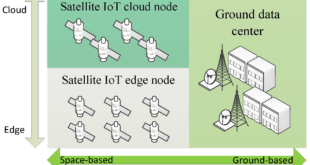Introduction In the quest for faster and more efficient ways to travel through the skies, hypersonic flight has emerged as a technological frontier. Hypersonic flight, defined as speeds exceeding Mach 5 (around 3,836 mph or 6,200 km/h), holds the promise of revolutionizing air travel, drastically reducing journey times, and opening …
Read More »Building a Home on the Moon: Exploring the Potential for a Permanent Lunar Settlement
The Moon has long been a source of fascination for humans. It is our closest celestial neighbor, and it has been the subject of exploration and study for centuries. For centuries, humans have looked up at the moon and wondered what it would be like to explore and even inhabit its …
Read More »The Future of Data Processing: How Satellite-Based Cloud Computing is Revolutionizing Edge Computing
Introduction: The New Frontier of Data Processing In our increasingly data-driven world, traditional computing infrastructure is being pushed to its limits. As organizations across sectors demand faster processing and real-time analytics—especially for remote and data-intensive applications—a revolutionary solution is emerging from an unexpected direction: space. Satellite-based cloud computing represents a …
Read More »Unleashing the Potential of 5G mmWave Technology: Challenges, Opportunities, and Innovations
Introduction: The advent of 5G technology marks a significant milestone in global telecommunications, particularly with the ongoing development of 5th generation mobile networking or 5G mmWave systems. This evolution has been characterized by a shift from initial mid-band spectrum deployments to the exploration of millimeter-wave (mmWave) ranges, spanning from 24 …
Read More »Harnessing the Power of GPUs for Quantum Computing: A Quantum Leap
Quantum computing is a groundbreaking field with the potential to revolutionize various industries, from cryptography to materials science. However, the development of quantum hardware is still in its early stages, leaving a gap between the potential of quantum algorithms and the means to run them efficiently. But there’s a hero …
Read More »Beyond Linear Processing: DARPA Blip Revolutionizing Radar Technology with Innovative Signal Processing Techniques
In the realm of radar technology, a transformative shift is underway, driven by the Defense Advanced Research Projects Agency’s (DARPA) Beyond Linear Processing (BLiP) program. This ambitious initiative seeks to revolutionize radar performance by harnessing the power of non-linear and iterative signal processing techniques. Understanding Radars Radar (radio detection …
Read More »On-Orbit Autonomous Labs(OALs): Revolutionizing Space Science
Introduction The exploration of space has always been an endeavor that pushes the boundaries of human knowledge and technology. While groundbreaking discoveries have been made, conducting experiments in the microgravity environment of space remains a complex and expensive undertaking. However, a new frontier is emerging, promising to make space science …
Read More »Artificial Intelligence (AI) to Enhance Military Intelligence: A New Frontier in Defense Technology
In the rapidly evolving landscape of defense technology, artificial intelligence (AI) is emerging as a game-changer in the realm of military intelligence. The utilization of AI in the military domain is not a new concept, but recent advancements have propelled it to new heights, enabling armed forces to make more …
Read More »CRISPR and Gene Editing: Revolutionizing Medicine and Shaping the Future of Human DNA Engineering
Introduction: In the span of just a few years, CRISPR, an acronym for Clustered Regularly Interspaced Short Palindromic Repeat, has transformed from a novel gene-editing tool to a powerhouse technology reshaping our approach to medicine and genetics. This revolutionary system, likened to genetic scissors, has garnered attention for its ability …
Read More »AI-Powered Human-Machine Teams: The Revolutionary Shift Transforming Modern Warfare
Warfare has been evolving throughout history, adapting to the technological advancements of each era. The future of warfare, however, is set to be transformed by an unprecedented force: Artificial Intelligence (AI). AI-driven human-machine teams are poised to reshape the very nature of conflict. These teams, consisting of humans collaborating with …
Read More » International Defense Security & Technology Your trusted Source for News, Research and Analysis
International Defense Security & Technology Your trusted Source for News, Research and Analysis


